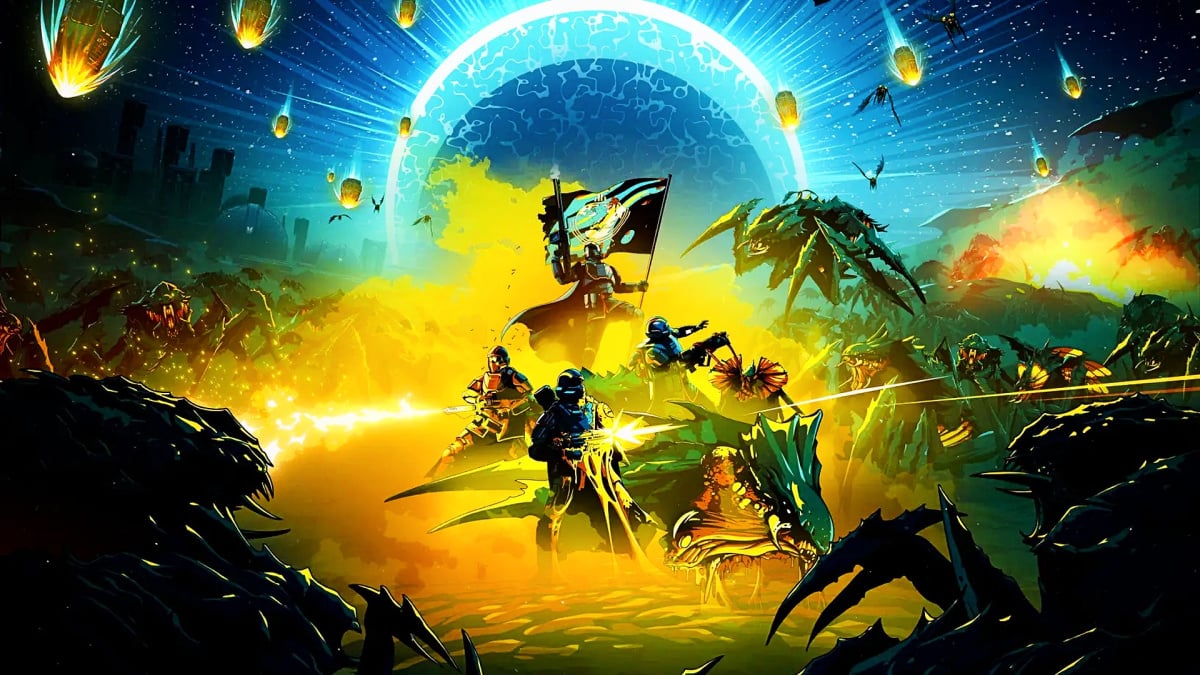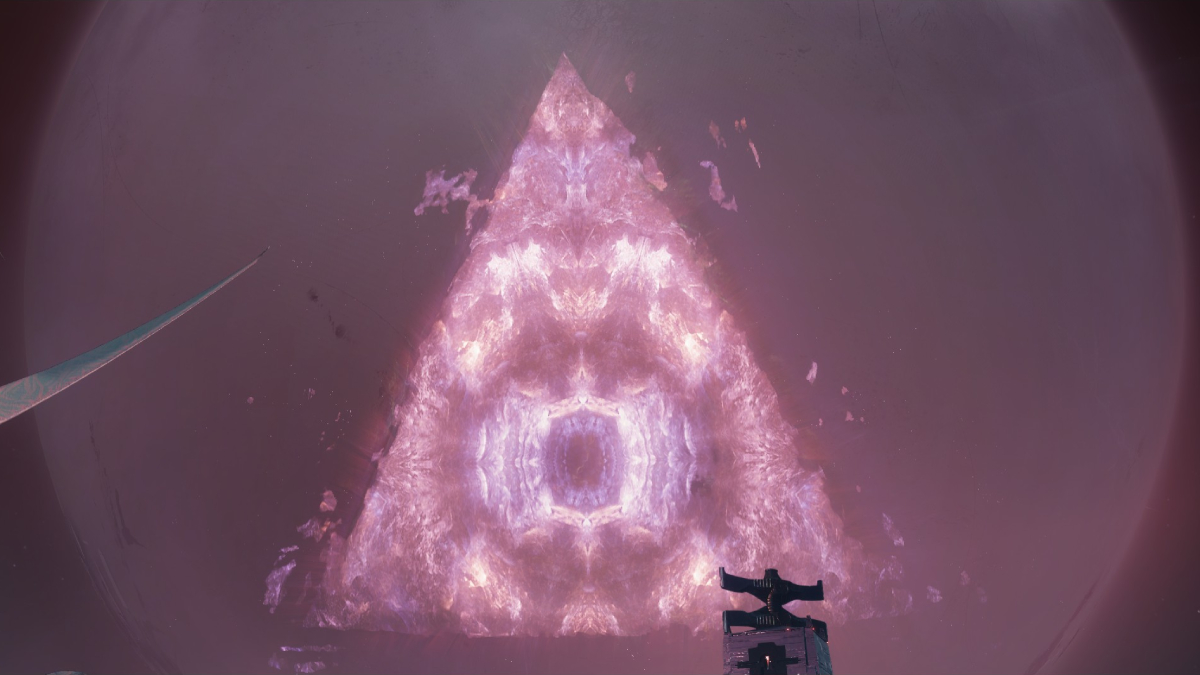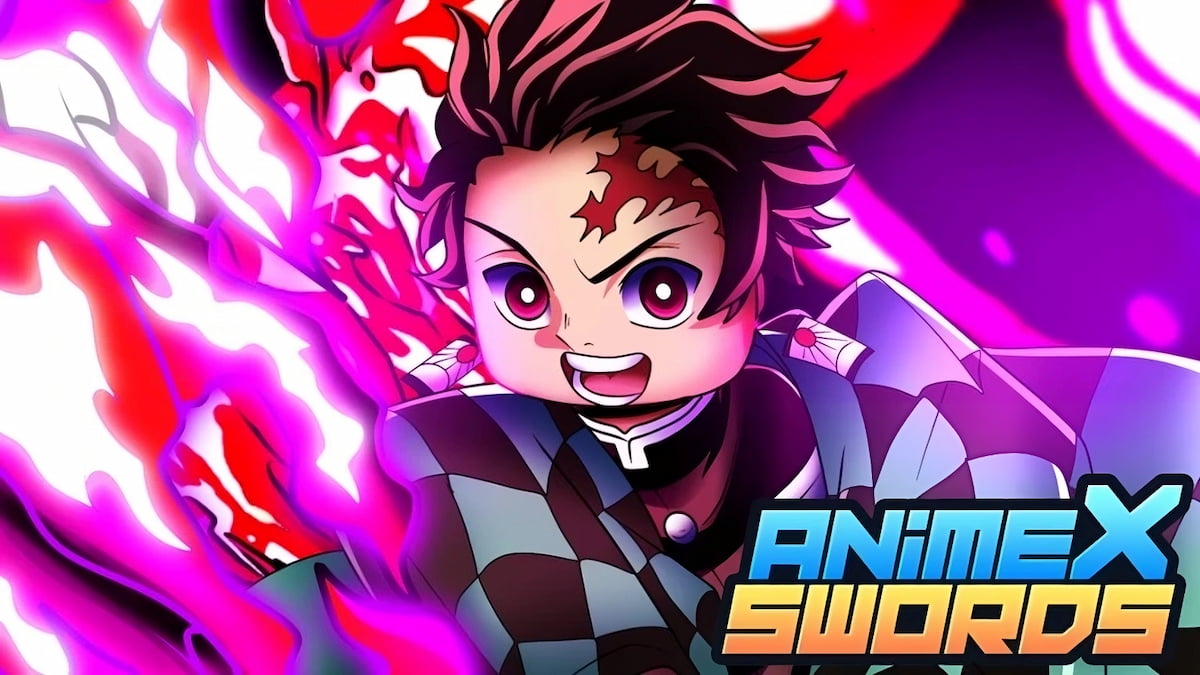The Final Fantasy series is built upon a treasure trove of excellent moments. With a legacy lasting over 35 years, Final Fantasy is one of the longest-running RPG series in gaming history. It’s a series noted for its constant evolution and innovation. No game is like another, and this is especially true on the story axis. We all have our favorite Final Fantasy moments, but here are the 10 wildest moments that only the series could pull off.
Garland’s Time Loop (Final Fantasy I)
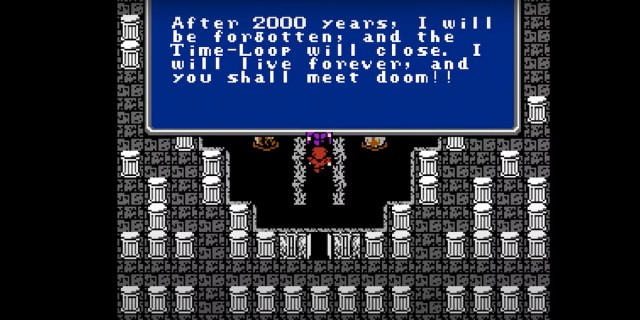 Image Source: Square Enix
Image Source: Square EnixIf you think modern Final Fantasy stories are deviating from the classics with their convoluted time travel and dimensional shenanigans, think again. The very first Final Fantasy game featured time travel as a core plot element. Yes, that’s right, the classic medieval Final Fantasy games of yore had their fair share of sci-fi wonkiness in them, and it wasn’t always easy to understand either.
Final Fantasy 1 is a textbook example of the kind of multi-layered storytelling Square Enix is known for in the modern era. In Final Fantasy 1, The main villain, Garland, constructs a time loop that allows him to live forever. The four heroes of light travel back 2000 years in the past to defeat Garland before he sets the loop in motion. What’s remarkable is that Final Fantasy 1 was released back in 1987 before Tetsuya Nomura would confuse everyone with his Kingdom Hearts plots.
My Friends Are My Power! (Final Fantasy IV)
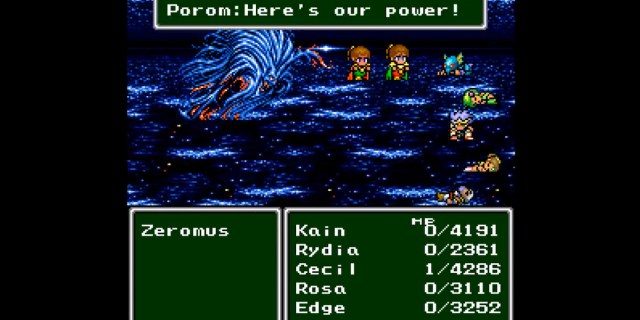 Image Source: Square Enix via Twinfinite
Image Source: Square Enix via TwinfiniteOne of the most shocking aspects of Final Fantasy IV was how many party members died sacrificing themselves. Throughout the game, no less than five main party members appear to die along the way. Cid literally straps a bomb to his chest and falls into a pool of lava several hours after meeting him. Palom and Parom sacrifice themselves as they turn to stone, and Tellah casts the devastating Meteo spell, dying in the process.
Well, what can be even more shocking than all those deaths, you say? The fact that they all come back to life by the end of the game. All those dead party members come together for a kumbaya moment in the Tower of Prayers to bring Cecil and friends the power they need to defeat Zeromus on the moon. The ‘friends are my power’ trope would go on to infest anime and video games in the late 90s and beyond, but back in 1991 when FFIV was released, this was still a fresh concept.
The Opera House Scene (Final Fantasy VI)
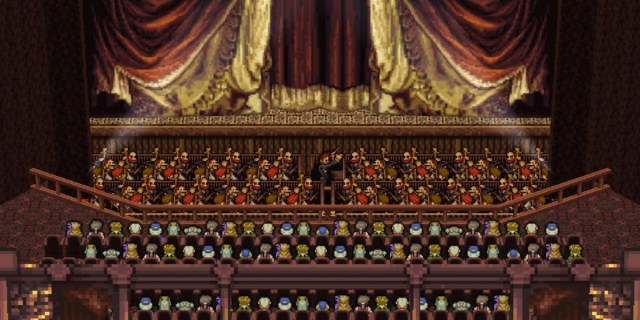 Image Source: Square Enix via Twinfinite
Image Source: Square Enix via TwinfiniteMusic is a powerful thing; it can tell stories in ways that words can’t, drawing out powerful emotions in the process. The developers of Final Fantasy VI understood the power of music well and demonstrated it better than any other game prior. Final Fantasy VI features a fully fleshed-out opera and has the player actually performing lines in it.
Portraying a Shakespearian retelling of the game’s themes through such a medium makes the opera scene truly revolutionary in the history of video game storytelling. But the best thing about it is just how darn phenomenal the actual music is. Series composer Nobuo Uematsu successfully emulated vocal opera singing across four operatic movements using the tiny Super Nintendo soundchip. All in all, the opera house scene in FFVI helped to cement Final Fantasy’s music as being some of the very best in video game history.
Kefka Destroys the World (Final Fantasy VI)
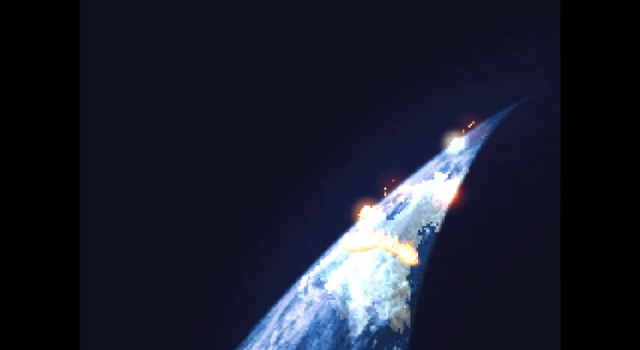 Image Source: Square Enix via Twinfinite
Image Source: Square Enix via TwinfiniteHow often does the villain of an RPG win? Not very. How often does a villain of any story win? Still pretty dang rare. The villain of Final Fantasy VI wins, and it’s not even at the end of the game, it’s smack dab in the middle. Many players (myself included) thought the climax on the Floating Continent with Kefka was the end of the game, but oh no, it’s only the beginning of the second half.
The second half of Final Fantasy VI takes place in a world utterly destroyed by Kefka. If the dreary funeral dirge music or the barren landscape doesn’t paint the tone perfectly, maybe Celes’ attempted suicide will. There’s no doubt about it; Kefka destroying the world in the middle of Final Fantasy VI’s adventure is a setting-changing incident unparalleled in gaming. The World of Ruin marks a turning point in RPG history for its radical tone shift and gameplay implications. Say what you want about Kefka being a clown of a villain, he’s one of the few that actually succeeded.
Sephiroth Kills Aerith (Final Fantasy VII)
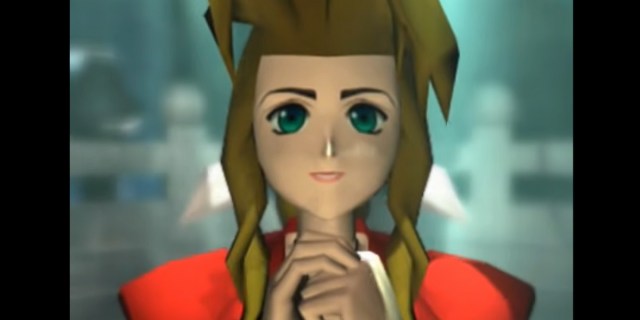 Image Source: Square Enix via Twinfinite
Image Source: Square Enix via TwinfiniteImportant characters dying wasn’t a new thing when Final Fantasy VII hit the scene in 1997. Final Fantasy IV had half of the main cast die at some point in its story and Final Fantasy II wasn’t shy about death and massacre in the slightest. What sets Aerith’s death apart in Final Fantasy VII is the presentation and story implementation. Aerith wasn’t just a main party member, she was arguably the main character of the entire game. You play the game through Cloud’s perspective, but Aerith’s importance as the last living Cetra makes her death more impactful than any other.
Unlike past games in the series, Final Fantasy VII didn’t switch around party members. The game encourages you to get comfortable with the team with personalized Materia builds and a static party layout. There was a strong sensation that the party was permanent in Final Fantasy VII; as Barret says, “There ain’t no getting off this train we’re on.” Aerith is the sole healer of the team and the game doesn’t warn you not to equip her with valuable stuff.
All of this makes for a shocking death out of left field. Final Fantasy VII doesn’t pull any punches with Aerith’s death; we see her stabbing in intimate detail and never get her back by the end of the game. Aerith’s death in Final Fantasy VII remains one of gaming’s greatest twists for good reason.
The Opening Blitzball Scene (Final Fantasy X)
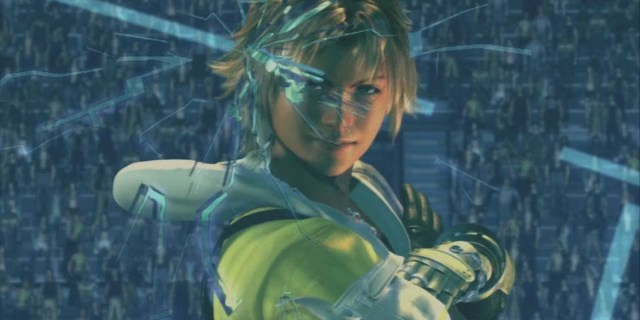 Image Source: Square Enix via Twinfinite
Image Source: Square Enix via TwinfiniteFinal Fantasy X has perhaps the strongest opening of any video game, full stop. It’s got intrigue, humor, excitement, and shock value, but it’s also got a whole lotta weird to top it off. We start with a familiar enough scene: a sports star signing fans’ autographs before playing in the big game. Things start feeling alien when we see Tidus (the aforementioned sports star) being lectured by some eery ghost boy, and we spot a giant vat of water suspended in the sky, which is the Blitzball stadium. And that’s not even scratching the surface of how weird Final Fantasy X gets.
The underwater Blitzball match begins with some excellent heavy metal music playing over players brutally tackling each other as they fly into the stands. All of this is playing out in spectacular CGI, which was top of its class in 2001. Then, a giant sky whale interrupts the match by decimating the entire city and warping Tidus and his mysterious acquaintance to an underwater ruin… Yeah, I can go on, but Final Fantasy X has many of these otherworldly moments. That intro hook is still one of the most mind-bogglingly awesome of any I’ve ever seen in gaming, so it easily earns a spot on this list.
Serah Shouts At Hope Across Time and Space (Final Fantasy XIII-2)
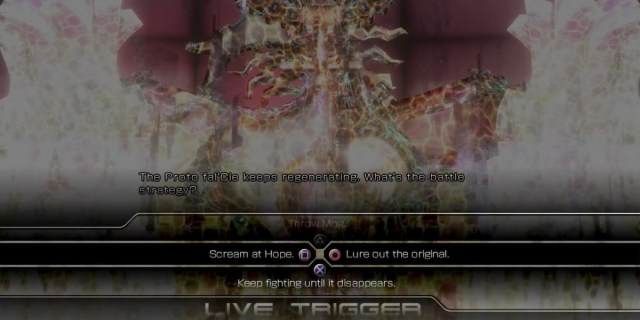 Image Source: Square Enix via Twinfinite
Image Source: Square Enix via TwinfiniteFinal Fantasy XIII-2 solved some of the gameplay issues that plagued its prequel but introduced some new story problems along with it. While Final Fantasy XIII’s story is mostly coherent and linear, XIII-2’s is anything but. The plot of FF XIII-2 revolves around solving paradoxes that have infected the space-time continuum. Some of these paradoxes are downright nonsensical, but none are as crazy as the one on this list.
Here’s my attempt to explain this paradox in simple terms, *takes deep breath*. Serah and Noel must confront a rogue AI before it destroys the entire city of Academia. When the protagonists fail to defeat this proto-Fal-Cie in combat after time-traveling back to its initial AI rampage, Serah yells out in frustration at the character who created the AI. She shouts, “Your machines are driving me nuts!” which in turn shuts the Fal-Cie down and solves the paradox. Serah’s shouting was transmitted to the past and the AI’s creator heard it through an Oracle Drive device, thus refraining from creating the AI in the first place.
I could go into even more detail, but I won’t rot your brains out with Final Fantasy XIII-2’s dimensional time-travel shenanigans. I’m a big fan of the Final Fantasy XIII trilogy, but even I cannot defend laughable sequences like this.
Lightning Kills a God and Creates a World Without Magic (Lightning Returns: Final Fantasy XIII)
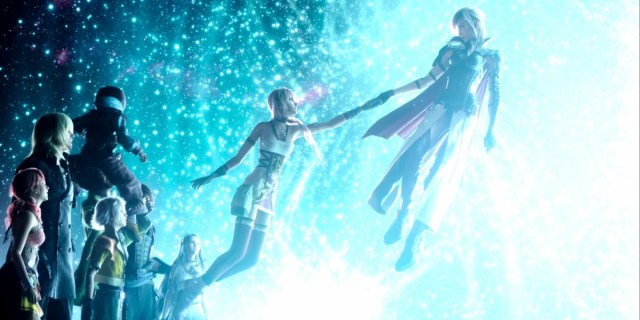 Image Source: Square Enix via Twinfinite
Image Source: Square Enix via TwinfiniteOkay, buckle in folks, this one’s a doozy and a half. At the very end of the XIII trilogy, Lightning goes head to head against the god of the entire setting: Bhunivelze. The boss fight itself is a blast, and the music is one of the very best final battle themes that I’ve heard in any game.
But let’s talk about what occurs after the boss fight. After killing the god, Lightning has all of her friends revived and they go on to create a new world without any magic. The last shot of the game has a stylish Lightning walking through modern-day Paris.
In summary, Lighting kills a god, resurrects all her companions, and then creates a new world without magic. Lightning Returns has a ridiculously over-the-top ending, but hey, at least it provides closure for the trilogy, right?
Noctis Sacrifices Himself (Final Fantasy XV)
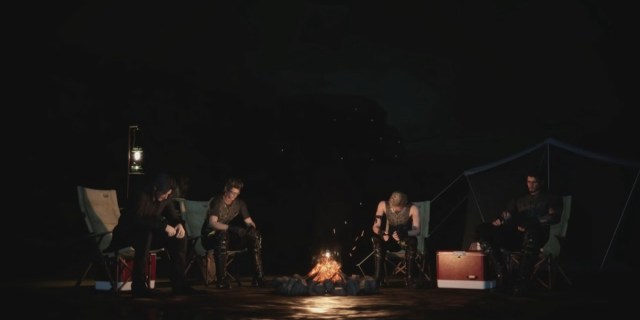 Image Source: Square Enix via Twinfinite
Image Source: Square Enix via TwinfiniteSay what you will about Final Fantasy XV’s story, but the ending is one of the series’ most emotional and satisfying. Instead of god-slaying wackiness, we get some intimate character moments between the four boys and see the final moments of Noctis’s life. After the final fight with Ardyn, Noctis sacrifices himself using the full extent of his kingly powers, which enable him to basically summon the old kings.
This kingly sacrifice was something Noctis’ dad was hesitant to give to him and was foreshadowed throughout the game. The flashback scene of Noctis saying his goodbyes to his three bros never fails to emotionally grip me. Props to Final Fantasy XV for not shying away from killing off major characters and allowing the story to get dreadfully dark when needed.
The Whispers Are The Classic Final Fantasy Fans (Final Fantasy VII Remake)
 Image Source: Square Enix
Image Source: Square EnixAs soon as we see the Whispers surrounding Aerith in the opening chapter, we know Final Fantasy VII Remake isn’t a one-for-one retelling of the classic game. While FF VII Remake stays mostly faithful and has the same story beats as the original, small deviations exist, accompanied by the Whispers. By the finale of the game, it’s revealed that the Whispers are actually trying to keep the old FF VII timeline intact. Sephiroth shows up and forces the party to fight an amalgamation of the Whispers, essentially killing the old FF VII timeline and opening an ‘anything goes’ story for the next games.
While the Whispers were clumsily integrated into the story at times, they represent a fascinating concept that draws on the setting’s lore and the meta implications of remakes in general. You can only have a concept so crazy with a legacy as longstanding as Final Fantasy’s. With Final Fantasy VII Remake, Square Enix can have their cake and eat it too regarding deviation from the original and staying true to source.
That concludes our 10 wildest Final Fantasy moments that only the series can pull off. Check out our Final Fantasy VII Rebirth character quiz to see which character you are. We also feature several useful guides on FF VII Rebirth, so be sure to browse them so you don’t miss a thing.

 1 month ago
76
1 month ago
76
